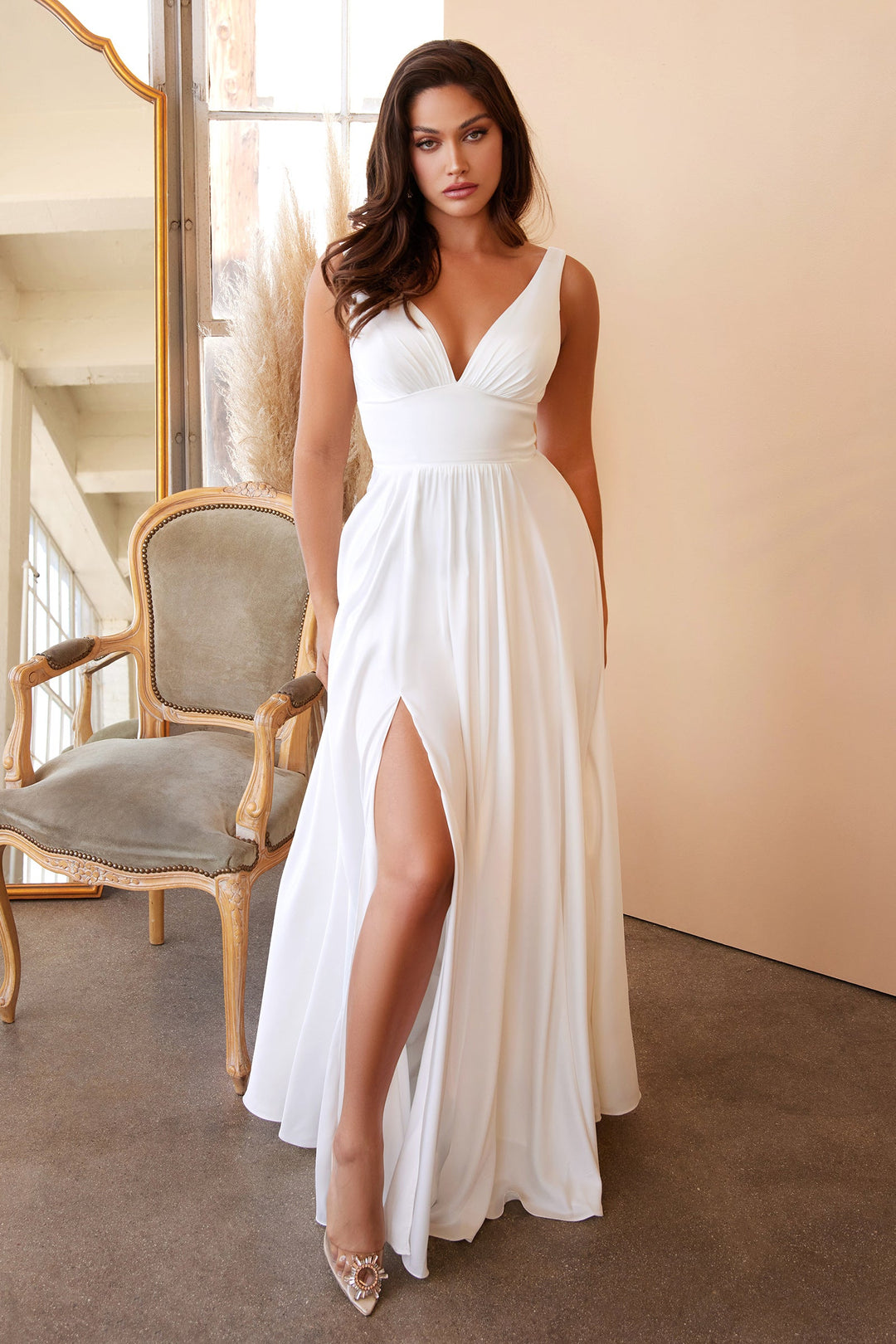Effortless Elegance: Styling Your Long White Dress for Every Occasion
A long white dress is more than a garment; it is a statement of purity, sophistication, and timeless style. Its versatility allows it to transcend seasonal trends and adapt to a myriad of events, from sun-drenched garden parties to formal evening galas. The challenge, and the art, lies not in acquiring the dress but in mastering its presentation. This guide is dedicated to unlocking the full potential of your long white dresses, providing you with the knowledge to curate looks that are both personally expressive and contextually perfect. We will delve into the objective principles of color theory, silhouette, and textile science, supported by authoritative sources, to build a foundation of undeniable style. By the end, you will possess a curated toolkit for transforming this classic piece into the centerpiece of your wardrobe for any event on your calendar.
The Foundational Allure of White in Fashion
The power of a long white dress begins with the color itself. White is not merely an absence of color; in the realm of physics and perception, it is the combination of all visible wavelengths of light. This scientific fact translates into a powerful psychological impact. Carl Jung, the renowned psychiatrist, often associated white with wholeness and completion, a blank slate ripe with potential. In Western cultures, it has long been tied to notions of purity and new beginnings, most famously in the bridal tradition popularized by Queen Victoria’s choice of a white wedding gown in 1840. However, its significance is far from monolithic. In many Eastern cultures, white is the color of mourning, representing the cycle of life and death. This duality is precisely what makes a white garment so compelling—it can be programmed with meaning by the wearer. From a practical styling perspective, white possesses an unparalleled ability to reflect light, which can create a luminous, eye-catching effect. As the Costume Institute at The Metropolitan Museum of Art has documented through its exhibitions, white garments have been used for centuries to denote status, cleanliness, and a modern aesthetic. When you choose a long white dress, you are tapping into this rich, complex history, making a choice that is both aesthetically bright and intellectually profound.
/product/21/5854832/1.jpg)
Decoding Silhouettes: Finding Your Perfect Fit
The silhouette of a dress is its architectural blueprint, the primary factor that determines its overall character and how it interacts with your unique body shape. Understanding these forms is crucial to selecting a long white dress that feels like a second skin. The A-line cut, for instance, which is fitted at the bodice and gradually flares out towards the hem, is a universally flattering shape. Its geometry, reminiscent of an isosceles triangle, creates a balanced and graceful line that can minimize the waist and elegantly drape over the hips. This design principle is frequently cited in fashion textbooks from institutions like the Fashion Institute of Technology as a foundational strategy for creating harmonious proportions. In contrast, a sheath or column dress offers a narrow, streamlined profile that follows the body’s natural lines. This silhouette, championed by style icons like Audrey Hepburn, projects an air of sophisticated minimalism but requires precise tailoring to achieve its intended effect. Then there is the empire waist, where the dress’s seam sits just below the bust, flowing freely to the floor. This design, with roots in Regency-era fashion, is not only romantic but also incredibly forgiving and comfortable. The choice of silhouette is a conversation between your personal comfort, your body’s proportions, and the demands of the occasion. A formal ball might call for the dramatic sweep of a ball gown silhouette, while a casual beach wedding is perfectly suited to a flowing, empire-waist maxi dress. The objective is to align the dress’s structure with your intention, creating a look that is both physically comfortable and visually coherent.

The Science of Fabric: From Breezy Chiffon to Luxurious Satin
The fabric of your long white dresses is the medium through which its design is expressed, and its properties are grounded in material science. The weight, drape, and texture of a textile are determined by its fiber content, weave, and finish. Chiffon, a lightweight, plain-woven fabric often made from silk or polyester, is characterized by its slight transparency and graceful flow. Its gossamer quality is achieved through the use of highly twisted yarns, which create a slight crinkle and a great deal of air permeability, making it ideal for warm-weather events. Satin, on the other hand, is defined not by its fiber but by its weave structure. A satin weave, which allows warp yarns to float over several weft yarns, results in a smooth, lustrous surface that reflects light brilliantly. This is why satin is synonymous with luxury and evening wear; as noted in textile archives from sources like Wikipedia, its high light reflectance is a key indicator of its formal appeal. For a more structured look, a cotton sateen or a heavy crepe provides body and a matte finish that can feel more modern and architectural. The choice of fabric also dictates care; while polyester blends offer durability and wrinkle resistance, natural fibers like silk and linen provide superior breathability but may require professional cleaning. Understanding these properties allows you to make an informed decision that balances aesthetic desire with practical considerations, ensuring your dress looks impeccable from the moment you put it on until the last dance.

Strategic Accessorizing: The Art of the Final Touch
Accessorizing a long white dress is a exercise in strategic enhancement, where each addition should serve a purpose without overwhelming the simplicity of the canvas. The neutral palette of white offers a unparalleled opportunity to inject personality through color, texture, and metallic accents. The first rule is to consider the color temperature of the white itself. A stark, bright white pairs exquisitely with sterling silver, platinum, or cool-toned gemstones like sapphires and emeralds, creating a crisp, modern contrast. An off-white or ivory dress, with its warmer undertones, harmonizes beautifully with gold, rose gold, and earth-toned accessories like amber or turquoise. This principle is often highlighted by celebrity stylists on platforms like YouTube, who emphasize that matching metal tones to the dress’s base color creates a cohesive and intentional look. When it comes to footwear, the occasion is king. For a formal event, a metallic sandal or a classic pump in a nude shade elongates the leg line seamlessly. For a bohemian-inspired gathering, leather wedges or embellished flat sandals add a grounded, artistic flair. Statement jewelry should be chosen with care; a single, bold piece—such as a chunky necklace or a pair of dramatic earrings—can anchor the entire outfit. As the famous fashion editor Diana Vreeland once proclaimed, “The eye has to travel.” Accessories guide that journey. Let your choices tell a story, whether it’s one of minimalist refinement with a delicate gold chain or one of bold extravagance with a vibrant silk scarf tied as a belt. The goal is to ensure that every accessory feels like an integral part of the whole, not an afterthought.

From Day to Night: Practical Transformations
The true test of a garment’s value is its adaptability, and a well-chosen long white dress is a master of transformation. The journey from a sunlit afternoon event to a candlelit evening affair requires only a few strategic adjustments. Begin with the foundation: the dress itself. A simple, unadorned maxi dress in a matte fabric like cotton or linen is the perfect starting point for a daytime look. Pair it with a wide-brimmed straw hat, oversized sunglasses, and flat, comfortable sandals. Carry a woven tote bag to complete an ensemble that is both chic and practical for a garden party or a brunch. As twilight approaches, the metamorphosis begins. Swap the daytime accessories for their evening counterparts. Drape a luxurious pashmina or a structured blazer over your shoulders—a technique often showcased in street style photography from fashion weeks, adding layers of sophistication and warmth. Exchange the straw hat for an elegant clutch bag, and replace the flat sandals with a pair of heels that add height and glamour. The most powerful tool in this transformation is often jewelry. Removing simple daytime pieces and adorning yourself with sparkling statement earrings or a cuff bracelet instantly elevates the look. This approach is not only stylish but also economically savvy, allowing you to maximize the utility of a single, beautiful long white dress. It demonstrates a deep understanding of style as a dynamic process rather than a static image.
Ultimately, the elegance of a long white dress is earned through thoughtful consideration of its components—color, cut, fabric, and accessories. It is a garment that rewards knowledge and intention. By applying these principles, you move beyond simply wearing a dress to truly styling an persona, one that is effortlessly elegant for every occasion that comes your way.






